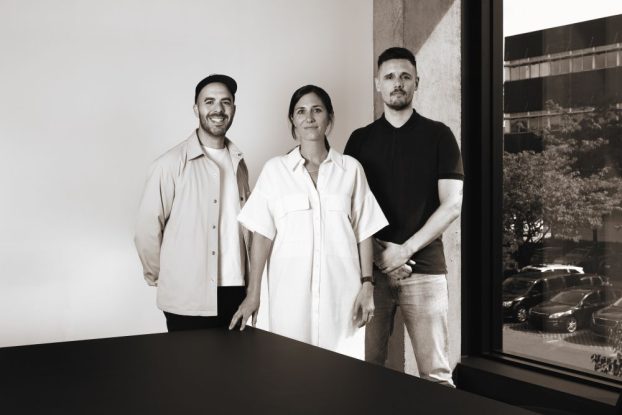No longer just a glossy pamphlet distributed to new employees along with a key card, corporate social responsibility has come a long way. So far, in fact, that some Canadian experts are ready to ditch the term altogether.
“I don’t use the term ‘CSR’ anymore; I think it’s dated. We talk about social strategy,” says Tony Pigott, president and CEO of ad agency J. Walter Thompson Canada, and global director, social marketing for JWT Worldwide. “These days it’s moving from an area of tactic to an area that is much more about business and brand strategy.”
And Canada is recognized as a leader in this space, given the fact that the self-esteem work for Dove originated here, and led Ogilvy to pick up two Grand Prixs at Cannes in 2007 for its “Evolution” viral video.
Last year Pigott and social strategy arm Ethos JWT were shortlisted in the Titanium category at Cannes for Brandaid, a social enterprise that connects microenterprises in developing countries such as Haiti with ad agencies to help them add value and get to market through branding and marketing.
If the term “social strategy” reminds you of Facebook, you’re not alone. The two “socials” are more and more intertwined as companies become increasingly transparent about their programs. “The power of social media to engage and attract people around a particular social mission is so powerful that it’s an essential ‘app’ in any corporation’s social strategy and activation,” says Pigott.
Doing good can be an effective way to add relevance to marketing messages, particularly for brands entering the cluttered world of social networks at this late stage in the game. Two years ago, Truro, N.S.-based men’s underwear brand Stanfield’s wanted to reach out to the under-35 market through social media. When Toronto-based agency of record John St. tuned into the chatter, they found only radio silence. “Nobody was talking about [Stanfield’s], good or bad,” says co-creative director Angus Tucker.
Getting young guys talking about a “dad brand” of briefs online was a creative challenge. One idea was to hire an actor to spend 25 days in the same pair of underwear – a suggestion that was met with looks of disgust from all sides. Framed as a challenge taken on for a good cause, however (and if he could wear a fresh pair every day), it became more appealing.
A statistical coincidence provided an in: men under 35 were the group hardest hit by testicular cancer. By linking the brand with the cause, Stanfield’s could live up to its tagline “We Support Men” both literally and emotionally, by raising awareness about this disease among the people it affected most. “Given what they sell, testicular cancer from a CSR standpoint made a lot of sense,” says Tucker.
After the team found the perfect spokesperson (Mark McIntyre was himself a testicular cancer survivor), interactive media prodco Secret Location wired up an apartment with live streaming webcams. Guyathome.com launched on Oct. 6, with a challenge for the voyeurs: for every “like” the campaign got on Facebook, Stanfield’s would donate $1 to the Canadian Cancer Society, up to $25,000.
Tucker believes this simplicity was crucial: “Just clicking the like button and knowing that a buck is going to cancer research? It’s pretty hard to resist that.”
Consumers agreed, and the “likes” poured in as Mark waxed his chest, got a tattoo and had CBC host George Stroumboulopoulos crash his blind date, all in nothing but his undies. He chatted live with viewers, maintained a Twitter feed and conducted hundreds of media interviews, an effort by PR firm Environics.
Traditional media coverage was crucial, says Tucker, adding that the campaign did not include purchased advertising. “We worried that the first four or five days it would spike, and then just fall off the table,” said Tucker. “We worked in different press – broadcast, radio, print and digital – to cover these different things, to keep the momentum going.”
Four days in, Stanfield’s and John St. were presented with the happy dilemma of reaching their goal much sooner than expected, and decided to raise the upper donation limit to $50,000. “It was a bit nerve-racking,” Tucker admits, “because what if we hit 50 in 10 days? What if this thing goes crazy?”
In the end, Stanfield’s donated just under $53,000 to the CCS. The campaign scored 45.7 million media hits, 1.3 million page views, an average viewing time of over three minutes and a cost per contact of under a penny. The Guy at Home was featured at SXSW as one of the year’s five best social media events.
While Stanfield’s wouldn’t share sales results based on the campaign, John St. is already hard at work on next fall’s effort. “The biggest win would be something that translated all the way down to the store level or the packaging, if some percentage of every Stanfield’s product sold went to testicular cancer research, completing the sale and the circle of this communication,” says Tucker.
For brands with ongoing CSR programs, creative use of new or unlikely media can keep the campaign fresh from year to year. Cadbury Canada launched its “Bicycle Factory” campaign in April 2009, using sales here at home to build and deliver bicycles to Ghana, where, thanks to the local cocoa industry, Cadbury has been one of the largest employers for more than 100 years.
“For most of us in Canada, [bicycles] represent joy in the form of fun, fresh air and fitness, but for many people in poorer countries bicycles represent hope, opportunity and occasionally survival,” says Simon Creet, chief creative officer at Cadbury Canada’s agency, The Hive, of Toronto.
The brand wanted a program that encouraged small purchases at home, and had a big impact in Africa. Working with Cadbury Ghana and local NGOs to identify recipients, Cadbury used simple math to make it easy for Canadians to participate: one UPC symbol equaled one bike part, and 100 parts equaled a bike. Print, TV and online advertising drove to Thebicyclefactory.ca, where consumers could upload UPC numbers and win a trip to Ghana. The goal of 5,000 bikes was easily met in the first year, and Cadbury saw a 42% jump in sales. 
For year two, Cadbury wanted to move from a basic education campaign to communicating how the program had changed lives for the better. The result: a 45-minute documentary produced by Toronto-based Frantic Films and Montreal’s JuJu Films. Wheels of Change told the story of five bike recipients – three students and two “extension workers” or farm educators – through the eyes of Ghanaian narrator Robert Dawuni as they wrestled with issues from urbanization to education to reduced mobility and access to technology.
“We chose a documentary because we knew we had a big and complex story to tell,” says Creet. “Anything shorter would have been a huge disservice to the story.”
In a media climate where YouTube limits videos to 15 minutes, a documentary may be seen as a risk, but it paid off. With zero advertising support, Wheels beat out Grey’s Anatomy and matched Jersey Shore when it aired last October. Winner of two Telly Awards, it’s been shortlisted or selected for film festivals in New York, L.A. and London, U.K.
As the third year of the program kicked off at press time, 9,332 bikes had been donated, with the third shipment slated for this fall. This time around, the marketing strategy partners with media networks including MuchMusic, which followed Hamilton, ON.-based band San Sebastian as they went to Ghana with last fall’s bike delivery. ETalk and TVA’s morning program Salut, Bonjour! also aired segments in May.
“The core of the program never changes,” says Creet. “The messaging evolves to keep it fresh.”
Speaking of fresh, over at Unilever Canada, the Hellmann’s brand team has been cultivating its Real Food Movement since it first worked to set up community gardens in urban centres in 2007. In 2010, the brand made some big changes to the product itself, switching to 100% free-run eggs and removing several “unpronounceable” ingredients from the recipe – changes symbolized in the addition of a little brown egg icon to the product label. Iron Chef winner Chuck Hughes acted as an ambassador for the movement, starring in online videos and providing fresh recipes with healthy ingredients.
“The brand just has to keep walking the walk so we have something to talk about,” says Nancy Vonk, co-creative director at Hellmann’s AOR Ogilvy Toronto. “The strength of the campaign has come from Hellmann’s showing that they’re committed to it and taking meaningful action.”
Also new last year was the introduction of a grants program, which donated $100,000 to 23 organizations across the country to help families learn more about what they eat, from a preschool in BC to the Toronto Botanical Gardens to a farmer’s market in Newmarket that holds an annual sandwich building contest. Organized by Toronto-based PR agency Harbinger, the response to the call for proposals was overwhelming, with 1,300 applications received.
“That showed there was tremendous need for this,” says Jennifer Pyle, project manager at Harbinger, adding the program will be continued in 2011 with a focus on children’s education. The relationship with Hughes will also continue, as the project continues to contribute to increasing dollar volume year over year, ahead 7% in 2010. Total Hellmann’s market share exceeded targets for 2010, growing to 48.8% by the end of last year.
“This cause they’re championing is inextricably linked to what the product is about,” says Aviva Groll, Hellmann’s project manager at Ogilvy, “and this makes it possible for them to keep sustaining it.”
Pigott ranks Canadians among the more socially engaged citizens worldwide, and companies are also more willing to share their stories than they were three or four years ago. But “we haven’t hit nirvana quite yet,” he warns.
“The move to socially engaged business is at the end of the beginning. There’s always going to be pressure to justify those efforts, because ROI applies to businesses across the board. But it’s definitely being taken more seriously now.”






















